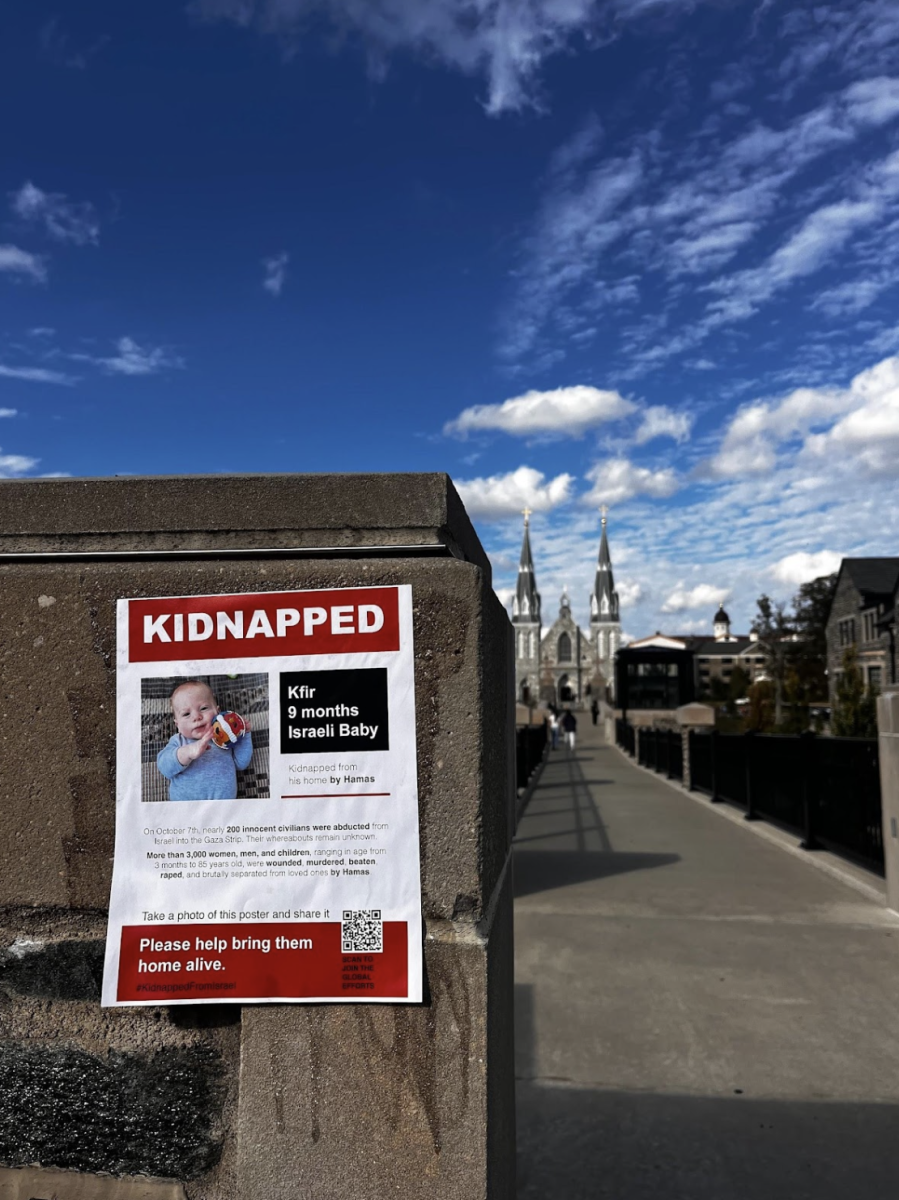A woman determinedly walked into the Starbucks near Villanova on Tuesday, Oct. 17, and wasted no time in pinning an eye-catching poster to the bulletin board before briskly leaving. “KIDNAPPED,” the poster startlingly read. It informs the reader of just one of the hundreds of missing Israeli hostages.
Merely one member of a much larger campaign, missing persons posters for various people removed from their homes by the group Hamas have been found in several major cities within the past few weeks.
The project was created by Israeli artists Nitzan Mintz and her partner, who refers to themselves as Dede Bandaid. Both had been in New York when the war began.
Both artists, feeling helpless due to their distance from home, took up the project in an effort to stay connected to the cause of bringing each missing person back safely.
Artistically, the posters are intended to look similar to those that were displayed in the aftermath of the attacks on Sept. 11, when many were unsure of the whereabouts of their missing loved ones. In an interview with the New York Times, the artists explained the fliers are not an obituary, and that there is still hope that the hostages remain alive.
But the campaign has continued to grow from beyond New York City, eventually reaching the University’s campus.
Just prior to heading down the stairs towards South, Students can’t miss the multitude of bright red fliers, each sharing information regarding missing adults, teenagers and infants.
During Fall Break, on Oct. 11, University President Rev. Peter M. Donahue, O.S.A, Ph.D., released a statement on the conflict to students and faculty.
“As we enjoy a period of respite, conversely, it has been a period of unrest in the world around us,” it read.
For many students, these posters immediately caught their eye as they returned back to their dorms on South Campus after the break.
“It was the first thing I saw,” freshman Claudia Herold said. “I thought someone from the area was missing at first.”
Many other students similarly voiced their immediate concern upon seeing the fliers, most of whom had also assumed they were in response to a local crisis
On each poster, there is a picture of the missing person, along with their name, age and a brief statement.
“On October 7th, nearly 200 innocent civilians were abducted from Israel into the Gaza Strip,” the flier reads. “Their whereabouts remain unknown.”
In many of the cities in which this art has taken flight, the posters have been taken down nearly as quickly as they have been pinned up, and the artists have expected this.
“We are street artists,” Mintz explained in an interview, “Our art doesn’t last long.”
On the University’s campus, however, the posters have remained where they have been placed since many first saw them upon returning to campus this past week.
Fliers remain on the bridge, by the SEPTA stop and scattered around the businesses down the street. A QR code can be found on each one if students request more information on involvement within the campaign.













